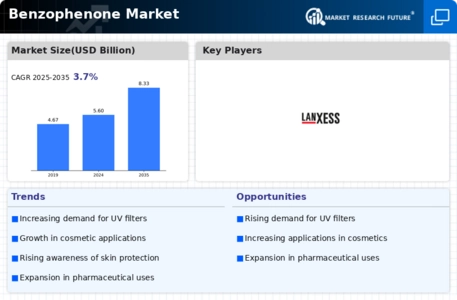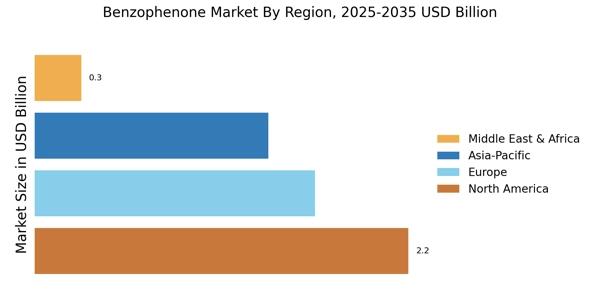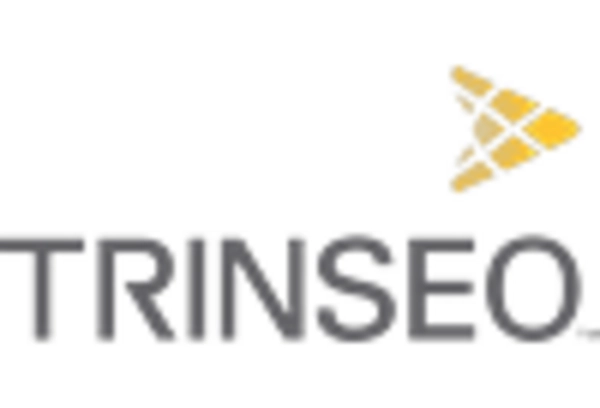The Benzophenone Market is currently characterized by a dynamic competitive landscape, driven by increasing demand across various applications, including cosmetics, plastics, and coatings. Key players such as BASF SE (Germany), Huntsman Corporation (US), and Solvay SA (Belgium) are strategically positioned to leverage their extensive product portfolios and technological capabilities. These companies are focusing on innovation and sustainability, which appear to be pivotal in shaping their operational strategies. For instance, BASF SE (Germany) emphasizes its commitment to sustainable solutions, which aligns with the growing consumer preference for eco-friendly products, thereby enhancing its competitive edge in the market.
In terms of business tactics, companies are increasingly localizing manufacturing and optimizing supply chains to enhance efficiency and responsiveness to market demands. The Benzophenone Market is moderately fragmented, with several players vying for market share. However, the collective influence of major companies like Eastman Chemical Company (US) and Trinseo S.A. (US) is significant, as they engage in strategic partnerships and collaborations to strengthen their market positions and expand their geographical reach.
In August 2025, Huntsman Corporation (US) announced a strategic partnership with a leading cosmetics manufacturer to develop innovative formulations utilizing benzophenone derivatives. This collaboration is expected to enhance Huntsman's product offerings in the personal care sector, reflecting a broader trend towards customization and innovation in consumer products. Such partnerships not only bolster product development but also enable Huntsman to tap into new customer segments, thereby potentially increasing its market share.
In September 2025, Solvay SA (Belgium) launched a new line of sustainable benzophenone products aimed at the coatings industry. This initiative underscores Solvay's commitment to sustainability and innovation, as it seeks to meet the rising demand for environmentally friendly solutions. The introduction of these products is likely to position Solvay favorably against competitors who may not prioritize sustainability, thus enhancing its competitive differentiation in the market.
Moreover, in July 2025, Eastman Chemical Company (US) expanded its production capacity for benzophenone derivatives in response to growing global demand. This expansion is indicative of Eastman's proactive approach to market dynamics, allowing the company to better serve its customers and maintain a competitive edge. By increasing production capabilities, Eastman is likely to enhance its supply chain reliability, which is becoming increasingly critical in today's market environment.
As of October 2025, current competitive trends in the Benzophenone Market are heavily influenced by digitalization, sustainability, and the integration of advanced technologies such as AI. Strategic alliances are playing a crucial role in shaping the competitive landscape, as companies seek to innovate and differentiate their offerings. The shift from price-based competition to a focus on innovation, technology, and supply chain reliability is evident, suggesting that future competitive differentiation will hinge on the ability to adapt to these evolving trends.


















Leave a Comment